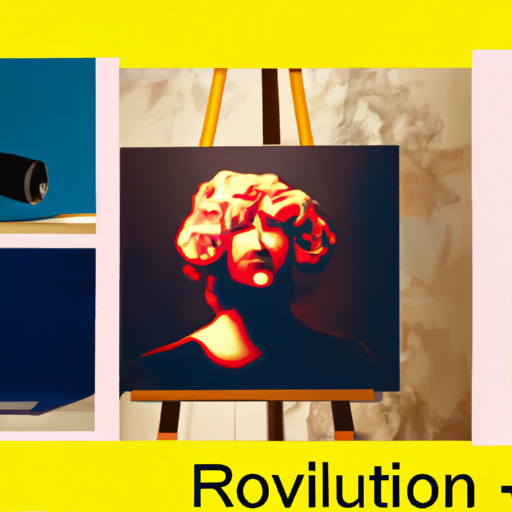
-
Table of Contents
AI-Powered Visual Search: Revolutionizing E-Commerce Design

With the rapid advancement of technology, artificial intelligence (AI) has become an integral part of our daily lives. From voice assistants to self-driving cars, AI has transformed various industries, including e-commerce. One of the most exciting applications of AI in e-commerce is visual search. By leveraging AI algorithms, visual search technology allows users to search for products using images rather than text. This revolutionary technology is reshaping the way we interact with e-commerce platforms and is poised to have a significant impact on the future of e-commerce design.
The Rise of Visual Search
Visual search has gained significant traction in recent years, thanks to advancements in computer vision and deep learning algorithms. The ability to search for products using images has become increasingly popular among consumers, as it offers a more intuitive and convenient way to find what they are looking for. According to a study by Slyce, a leading visual search provider, 74% of consumers say that text-based keyword searches are inefficient when it comes to finding the right product.
One of the key drivers behind the rise of visual search is the proliferation of smartphones with high-quality cameras. With the majority of consumers now carrying a powerful camera in their pockets, taking a photo and searching for similar products has become effortless. This has led to a surge in demand for visual search capabilities from e-commerce platforms.
The Benefits of AI-Powered Visual Search
AI-powered visual search offers several benefits for both consumers and e-commerce businesses:
- Enhanced User Experience: Visual search provides a more engaging and personalized user experience. Instead of relying on text-based searches, users can simply upload an image or take a photo to find visually similar products. This eliminates the need for users to accurately describe the product they are looking for, reducing friction and improving the overall shopping experience.
- Increased Conversion Rates: Visual search has the potential to significantly increase conversion rates for e-commerce businesses. By making it easier for users to find products they are interested in, visual search reduces the likelihood of users abandoning their shopping journey due to frustration or inability to find what they are looking for. According to a study by ViSenze, an AI-powered visual search provider, visual search can increase conversion rates by up to 30%.
- Improved Product Discovery: Visual search enables users to discover products they may not have been able to find through traditional text-based searches. By analyzing the visual features of an image, AI algorithms can recommend visually similar products, allowing users to explore a wider range of options. This not only benefits consumers by expanding their choices but also helps e-commerce businesses by increasing exposure to their product catalog.
- Reduced Returns: Returns are a significant challenge for e-commerce businesses, costing them time and money. Visual search can help reduce returns by providing users with more accurate product recommendations based on visual similarity. By ensuring that users find products that closely match their expectations, visual search minimizes the likelihood of returns due to dissatisfaction with the product’s appearance.
Real-World Examples
Several e-commerce giants have already embraced AI-powered visual search and are reaping the benefits:
Pinterest:
Pinterest, a popular visual discovery platform, has integrated visual search into its platform to enhance the user experience. Users can now take a photo or upload an image to find visually similar products, recipes, or home decor ideas. This has not only improved user engagement but has also provided valuable data for Pinterest to understand user preferences and tailor their recommendations.
ASOS:
ASOS, a leading online fashion retailer, has implemented visual search to help users find products based on their desired style. By allowing users to upload images or take photos of outfits they like, ASOS can recommend visually similar products from their vast catalog. This has not only increased customer satisfaction but has also boosted ASOS’s conversion rates.
The Future of E-Commerce Design
As visual search continues to gain momentum, it is expected to have a profound impact on e-commerce design. Here are some key trends that are likely to shape the future of e-commerce design:
- Integration of Visual Search: Visual search will become a standard feature in e-commerce platforms, enabling users to seamlessly search for products using images. E-commerce websites will need to ensure that their design accommodates visual search functionality, making it easily accessible and intuitive for users.
- Improved Visual Recommendations: AI algorithms will become more sophisticated in understanding visual features and recommending visually similar products. E-commerce platforms will leverage these advancements to provide users with highly accurate and personalized recommendations, enhancing the overall shopping experience.
- Augmented Reality (AR) Integration: Visual search will be combined with augmented reality technology to enable users to virtually try on products before making a purchase. This will not only help users make more informed buying decisions but will also reduce returns and enhance customer satisfaction.
- Voice-Enabled Visual Search: The integration of voice assistants with visual search technology will enable users to search for products using voice commands. This will further simplify the search process and make it more accessible for users with disabilities.
Conclusion
AI-powered visual search is revolutionizing e-commerce design by providing a more intuitive and personalized shopping experience. With its ability to enhance user experience, increase conversion rates, improve product discovery, and reduce returns, visual search has become a game-changer for e-commerce businesses. As visual search continues to evolve and become more sophisticated, it is expected to shape the future of e-commerce design, with features like augmented reality integration and voice-enabled search becoming commonplace. E-commerce businesses that embrace visual search will be well-positioned to stay ahead of the competition and deliver a seamless and engaging shopping experience to their customers.
